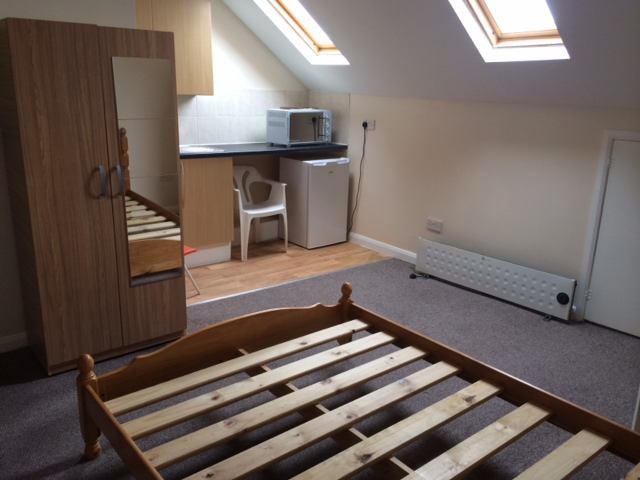Loft conversions have become a popular solution for homeowners seeking to maximize their living space without the need for moving. Across the UK, different cities have embraced this trend, each with unique challenges and successes. In this blog post, we’ll explore some standout case studies of successful loft conversions in various UK cities, highlighting what made these projects successful and how they can offer valuable lessons for homeowners and developers alike.
1. London: Maximizing Space in the Capital
London’s property market is notoriously competitive, making loft conversions a highly sought-after option for increasing living space in the city. One exemplary case is a project in the Borough of Islington, where a Victorian terraced house underwent a significant loft conversion.
Project Overview: The homeowners, a young family, wanted to create an additional bedroom and a home office. The project involved transforming an unused loft space into a stylish, functional area while respecting the building’s historical architecture.
Challenges and Solutions:
- Historical Restrictions: The property was located in a conservation area, which meant the design had to comply with strict guidelines. The solution was a sensitive approach, using materials that complemented the existing structure and ensuring that any changes were in keeping with the area’s character.
- Space Constraints: Given the limited headroom, the design team incorporated a dormer window to provide additional height and natural light. The result was a light-filled space with ample headroom, making it suitable for everyday use.
Outcome: The conversion added significant value to the property, with the new bedroom and office space appealing to potential buyers and renters. The project demonstrated how careful planning and adherence to local regulations could yield a successful and valuable outcome.
2. Manchester: Modern Living in the North
In Manchester, a different approach was needed to cater to the city’s modern, urban lifestyle. A case study in the Northern Quarter showcases a successful loft conversion that turned a former industrial building into chic, contemporary apartments.
Project Overview: The conversion aimed to create modern living spaces with open-plan layouts and high-end finishes. The challenge was to transform the raw, unfinished loft area into stylish apartments that would appeal to young professionals.
Challenges and Solutions:
- Structural Considerations: The building’s original design required significant reinforcement to support the new residential units. Engineers implemented a steel framework to ensure the structural integrity of the conversion.
- Design Aesthetics: To meet the demands of modern living, the design team focused on creating open, flexible spaces with large windows and high ceilings. Exposed brickwork and industrial-style fixtures were used to maintain the building’s character while providing a sleek, contemporary feel.
Outcome: The converted lofts quickly became popular among Manchester’s young professionals, attracted by the blend of historic charm and modern convenience. The project successfully revitalized an old building and added value by aligning with current market trends. If you are seeking a source of inspiration and guidance about the successful loft conversions in different UK cities, visit https://loftconversion.london/ for further info.
3. Edinburgh: Blending Tradition and Modernity
Edinburgh, known for its historic architecture, presents a unique set of challenges and opportunities for loft conversions. A notable project involved a Georgian townhouse in the city’s New Town, where the goal was to create additional living space while respecting the building’s historic significance.
Project Overview: The conversion aimed to add a new bedroom and a small living area. The design needed to balance modern functionality with the preservation of the building’s traditional aesthetic.
Challenges and Solutions:
- Preservation of Heritage: The project required close collaboration with heritage experts to ensure that the conversion did not compromise the building’s historical features. This included using period-appropriate materials and techniques.
- Integration with Existing Architecture: To blend the new loft with the existing structure, the design team used custom-made skylights and subtle interior finishes that complemented the Georgian style.
Outcome: The finished loft offered a seamless blend of modern amenities and historical charm. The project not only enhanced the functionality of the home but also preserved the integrity of Edinburgh’s architectural heritage. This case highlighted the importance of respecting historical context while achieving contemporary needs.

4. Bristol: Innovative Solutions for Diverse Spaces
Bristol’s diverse housing stock provides a variety of opportunities for loft conversions. A standout example is a project in a 1970s-era suburban house, where the goal was to create a family-friendly space that could accommodate growing needs.
Project Overview: The homeowners needed an extra bedroom and a play area for their children. The challenge was to ensure that the new loft space was both functional and aesthetically pleasing.
Challenges and Solutions:
- Modernization of an Older Property: The house’s original design did not include the most efficient use of space. The conversion team used modern insulation techniques and energy-efficient windows to enhance the comfort and sustainability of the loft.
- Creating Family-Friendly Spaces: The design incorporated built-in storage solutions and flexible layouts that could adapt to the family’s changing needs over time.
Outcome: The loft conversion successfully created a versatile space that met the family’s requirements and improved the overall efficiency of the home. The project demonstrated how thoughtful design can transform older properties to meet contemporary needs.
Conclusion
Loft conversions across different UK cities illustrate a range of approaches tailored to local contexts and individual needs. From navigating historical restrictions in London and Edinburgh to embracing modern aesthetics in Manchester and Bristol, these case studies reveal the adaptability and creativity required for successful projects.
Whether dealing with heritage considerations, structural challenges, or design preferences, the common thread in these successful loft conversions is the emphasis on careful planning and tailored solutions. Homeowners and developers can draw valuable lessons from these examples, applying best practices and innovative strategies to achieve their loft conversion goals.
By understanding the unique characteristics of each project and city, we can better appreciate the potential of loft conversions as a means to enhance living spaces and property value, regardless of location.





